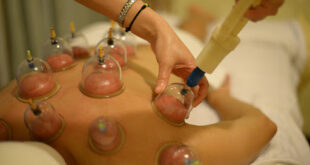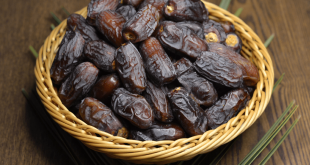Hijamah refers to the extraction of blood from the body by means of cupping using a suitable vessel. Cupping in Islam has real benefits in treating many diseases.
- Linguistic meaning of cupping
- Technical meaning of cupping
- History of cupping
- How cupping is done
Praise be to Allah.
Linguistic meaning of cupping
The word hijamah (cupping) comes from the word hajm which means sucking, as in the phrase hajama al-sabiy thadya ummihi (the infant suckled his mother’s breast).
Al-Hajjam means the cupper, hijamahThe word hijamah (cupping) comes from the word hajm which means sucking, as in the phrase hajama al-sabiy thadya ummihi (the infant suckled his mother’s breast). Al-Hajjam means the cupper, hijamah is the profession of cupping, and the word mihjam is used to describe the vessel in which the blood is collected and the lancet used by the cupper. (See Lisan al-‘Arab). Technical meaning of cupping In fiqh terminology the word hijamah is applied by some scholars to the extraction of blood from the nape of the neck by means of cupping after making an incision with the lancet. Al-Zarqani stated that cupping is not limited to the nape of the neck, rather it may be done on any part of the body . This was also the view of al-Khattabi. In conclusion, hijamah refers to the extraction of blood from the body by means of cupping using a suitable vessel or whatever modern equipment that serves the same purpose. More is the profession of cupping, and the word mihjam is used to describe the vessel in which the blood is collected and the lancet used by the cupper. (See Lisan al-‘Arab).
Technical meaning of cupping
In fiqh terminology the word hijamahThe word hijamah (cupping) comes from the word hajm which means sucking, as in the phrase hajama al-sabiy thadya ummihi (the infant suckled his mother’s breast). Al-Hajjam means the cupper, hijamah is the profession of cupping, and the word mihjam is used to describe the vessel in which the blood is collected and the lancet used by the cupper. (See Lisan al-‘Arab). Technical meaning of cupping In fiqh terminology the word hijamah is applied by some scholars to the extraction of blood from the nape of the neck by means of cupping after making an incision with the lancet. Al-Zarqani stated that cupping is not limited to the nape of the neck, rather it may be done on any part of the body . This was also the view of al-Khattabi. In conclusion, hijamah refers to the extraction of blood from the body by means of cupping using a suitable vessel or whatever modern equipment that serves the same purpose. More is applied by some scholars to the extraction of blood from the nape of the neck by means of cupping after making an incision with the lancet. Al-Zarqani stated that cupping is not limited to the nape of the neck, rather it may be done on any part of the body . This was also the view of al-Khattabi.
In conclusion, hijamahThe word hijamah (cupping) comes from the word hajm which means sucking, as in the phrase hajama al-sabiy thadya ummihi (the infant suckled his mother’s breast). Al-Hajjam means the cupper, hijamah is the profession of cupping, and the word mihjam is used to describe the vessel in which the blood is collected and the lancet used by the cupper. (See Lisan al-‘Arab). Technical meaning of cupping In fiqh terminology the word hijamah is applied by some scholars to the extraction of blood from the nape of the neck by means of cupping after making an incision with the lancet. Al-Zarqani stated that cupping is not limited to the nape of the neck, rather it may be done on any part of the body . This was also the view of al-Khattabi. In conclusion, hijamah refers to the extraction of blood from the body by means of cupping using a suitable vessel or whatever modern equipment that serves the same purpose. More refers to the extraction of blood from the body by means of cupping using a suitable vessel or whatever modern equipment that serves the same purpose.
History of cupping
Cupping has been known since ancient times. It was known to the Chinese, the Babylonians and the Pharaohs. Their relics and carved images indicate that they used cupping to treat some diseases. At first they used metal cups or bulls’ horns, from which they would remove the air by sucking it out after placing the cup on the skin. Then they used glass cups from which they would remove the air by burning a piece of cotton or wool inside the cup.
Virtues of cupping:
Al-Bukhari narrated in his Sahih (5269) from Sa’id ibn Jubayr from Ibn ‘Abbas (may Allah be pleased with him) that the Prophet (peace and blessings of Allah be upon him) said: “Healing is in three things: drinking honey, the incision of a cupper, and cauterizing with fire, but I forbid my ummah to use cauterizing.”
Al-Bukhari (5263) and Muslim (2952) narrated that Anas ibn Malik was asked about the earnings of the cupper, and he said: The Messenger of Allah (peace and blessings of Allah be upon him) was treated with cupping by Abu Taybah. He ordered that he should be given two sa’ of food, and he spoke with his masters so that they reduced what they used to take from his earnings. And he said: “The best medicine with which you treat yourselves is cupping, or it is one of the best of your medicines.”
Jabir ibn ‘Abd-Allah (may Allah be pleased with him) said: I heard the Messenger of Allah (peace and blessings of Allah be upon him) say: “If there is anything good in the medicines with which you treat yourselves, it is in the incision of the cupper, or a drink of honey or cauterization with fire, but I do not like to be cauterized.” (Narrated by al-Bukhari, 6583; Muslim, 2205).
Benefits of cupping:
Cupping has real benefits in treating many diseases, past and present. The diseases which have been treated by cupping and for which it has been of benefit by Allah’s Leave include the following:
- Circulatory diseases
- Treating blood pressure and infection of the heart muscle
- Diseases of the chest and trachea
- Headache and pains in the eyes
- Pain in the neck and stomach, and rheumatic pain in the muscles
- Some diseases of the heart and chest, and pain in the joints
In addition, cupping may offer a unique treatment which may reduce pain, and it does not have any side-effects. For more information on the benefits of cupping, please see Zad al-Ma’ad by Ibn al-Qayyim, 4/52, and al-Hijamah: Ahkamuha wa Fawaiduha by Ibrahim al-Hazimi.
How cupping is done
The mouth of the cupping vessel (nowadays they use glass vessels) is placed on the skin at the site chosen for cupping. Then the cupper rarefies the air inside the vessel by burning a small piece of paper or cotton inside the vessel, so that the mouth of the vessel will cling to the skin. Sometimes a machine is used instead of the method described above. The vessel clings to the skin and is left for a period of three to ten minutes. Then it is lifted off and a very small incision is made in the skin using a clean sharp instrument such as a razor blade or the like. Then the cup is put back in the same manner as described above, until it is filled with the bad blood that comes out of the veins. Then it is taken off, and may be put back once more if needed. When it is finished and the cup is taken away, a dry dressing is placed over the site of the incision. (See Mabahith fi’l-Jarahah al-Sughra wa’l-Takhdir by Prof. Dr. Nazmi al-Qabbani).
Before ending we should point out that no one should undertake cupping except one who can do it well, because of the harm that may result if it is done by one who is incompetent.
Number 1 : Hijama Cupping Therapy is a Sunnah
During “Al-Isra Wal Miraj” or the “Night Journey & Ascension”, our Beloved Prophet Muhammad ﷺ experienced many profoundly significant events. He flew on a winged horse (Al-Buraq) from Makkah to Jerusalem, accompanied by the Angel Jibreel. He prayed with many other Messengers of Allah, ascended to the highest of the seven heavens, was given the gift of five times daily prayer and tenets of creed by Allah (Glorious is He and He is Exalted).
“Glory to He Who took His servant for a journey by night from the most sacred mosque to the farthest mosque, whose precincts We blessed, in order that We might show him some of Our signs: for He is the One Who hears and sees [all things]”. Quran 17:1
Amongst all these amazing miracles, Allah (Glorious is He and He is Exalted) also ordered the Angels to instruct Prophet Muhammad ﷺ to establish hijama cupping therapy;
“I did not pass by an Angel from the Angels on the Night Journey except that they all said to me; ‘Upon you is Hijama cupping, O Muhammad’”(Saheeh Sunan ibn Maajah -3477)
Number 2 : The Best of Medicines
Hijama was declared the best of medicines by Prophet Muhammad ﷺ, alongside the Quran.
He ﷺ said: “Hijama cupping is the most helpful procedure for human beings to cure themselves.” (Al Bukhari # 5357)
Number 3 : Other Cultures Practice Cupping Therapy Too
He Cupping therapy has been practiced for centuries globally. The first documented medical text was found in 1550 BC in Egypt. Cupping was also discovered in China over 5,000 years ago and is still practiced to this day. It was commonly practiced in the Roman Empire, Islamic Empire, Europe, Russia, Central Asia, South Asia and USA. It was very popular during the middle ages and 18th and 19th Centuries in Europe. Right now it is most popular in China, Finland and Russia and many Islamic countries.
Number 4 : Cupping Therapy vs. Hijama Cupping Therapy
Cupping therapy is the name of the actual procedure itself. A vacuum is created in a cup and placed on the body. This vacuum causes a negative pressure and pulls the muscles into the cup and therefore, draws the blood to the cupped area. This is known as “dry cupping”. Then you remove the cup in order to make small, shallow incisions in that same area, before putting the cup back on. This pulls out the toxic blood, acids and excess fluids from the body. This is known as “Wet Cupping or Blood Cupping.”
But what differentiates hijama is the religious and spiritual aspect of the practice. “Hijama” is the Islamic version of cupping therapy. Muslims practice hijama cupping therapy, in accordance to the way of the Prophet ﷺ. It means that the patient and hijama practitioner should have done their ablutions (wudu) and should recite Quran during the hijama procedure.
Number 5 : Hijama Returns The Body To A Normal State
Al-hijamah in Arabic literally means “to suck” and to “return to a normal state” of internal balance. It ultimately helps the body to create a balance, healthy alkaline environment by removing acidity. This fixes any problem that the body has, by bringing it to its normal state. Hijama cupping therapy is a holistic, super powerful detox which removes toxic and stagnant blood from your body. It expels negative, unhealthy elements from the body, and allows it to replenish itself.
The Prophet ﷺ said: “The best treatment is hijama cupping; it removes blood, lightens the back and sharpens the eyesight.” (At-Tirmidhi, 3053)
Number 6 : The Medical Benefits Are Well-Documented
Hijama Cupping is an excellent form of preventative and curative therapy. Below are some of the ways cupping helps:
Boosts the circulatory and immune systems
Cleanses and detoxifies the body
Treats illness and relaxes the patient
Pain relief
Fertility
Hijama is also useful for treating many muscular, skeletal, neurological, immune, cardio-vascular, respiratory, digestive and urinary issues. Some of its benefits were highlighted by Prophet Muhammad ﷺ:
Ibn Umar reported that the Messenger ﷺ of Allah (Glorious is He and He is Exalted) said, “Hijama cupping on an empty stomach is best. It increases the intellect and improves the memory. It improves the memory of the one memorizing….” (Saheeh Sunan ibn Maajah, 3488).
Number 7 : It Works On An Emotional Level Too
Islamic medicine is holistic and works on the levels of mind, body and soul. Hijama cupping therapy is a minor, surgical procedure which has immediate physical effect. However, it also serves to alleviate, mental, emotional, spiritual and metaphysical issues. It is very relaxing and dispels anxiety and depression. According ibn Al Qaiyum, Prophet Muhammad ﷺ had Hijama performed upon his head to remove black magic which had been cast upon him;
Ibn al-Qaiyum (may Allah have mercy on him) mentions that the Messenger ﷺ was cupped on his head when he was afflicted with magic and that it is from the best of cures for this if performed correctly. [Zaad al Ma’aad (4/125-126)]
Number 8 : There Are Sunnah Points On Your Body
The traditional sunnah points for hijama therapy are on the upper back, which essentially target the heart, lungs, brain and spine. All are major foundations for optimal health.
“Hijama cupping on the back of the neck treat seventy-two illnesses” (Collected by At-Tabarani)
Hijama serves to cleanse and unblock the major arteries and veins.
Anas narrated that the Prophet ﷺ used to have Hijama Cupping done on the veins on the side of the neck and the upper back. (At Tirmidhi)
Number 9 : There Are Ideal Times To Do It
Hijama cupping is both a preventative and curative remedy. It is recommended that you should have a hijama detox, and then use hijama as a form of maintenance 2-4 times a year if you are healthy. If you have serious medical conditions, it can be performed more often. It is best to have hijama performed on the “Sunnah Days” according to hadith:
“Whoever performs Hijama cupping in the 17th, 19th and 21st day (of the Islamic Lunar month), then it is a cure for every disease”. [Saheeh Sunan ibn Maajah (3861)].
Number 10 : The Hijama Therapist Has A Special Status
Imagine having a career in a blessed profession that the Holy Prophet Muhammad ﷺ has praised himself;
The Prophet ﷺ said: “If there is anything good in the medicines with which you treat yourselves, it is in the incision of the hijama therapist, or a drink of honey….” (Muslim #2205)
We encourage as many Muslims as possible to learn how to perform hijama professionally, in order to:
Counter the negative side effects of alophathic medication and chemicals
Treat the diseases that are un-treatable even with modern medicine
Have this treatment available to more people
Have a satisfying and spiritually rewarding career
Revive the forgotten sunnah of hijama.
The career of a professional hijama therapist is fulfilling and benefits the practitioner in this life and the next.
Post Disclaimer | Support Us
Support Us
The sailanmuslim.com web site entirely supported by individual donors and well wishers. If you regularly visit this site and wish to show your appreciation, or if you wish to see further development of sailanmuslim.com, please donate us
IMPORTANT : All content hosted on sailanmuslim.com is solely for non-commercial purposes and with the permission of original copyright holders. Any other use of the hosted content, such as for financial gain, requires express approval from the copyright owners.
 Sri lanka Muslims Web Portal Sri Lanka Muslims News Center
Sri lanka Muslims Web Portal Sri Lanka Muslims News Center
 Donate
Donate


